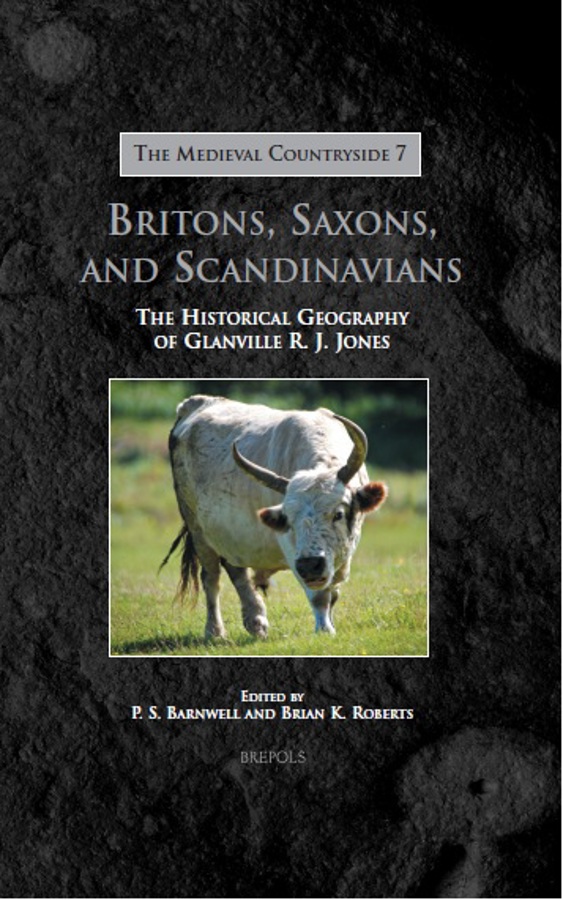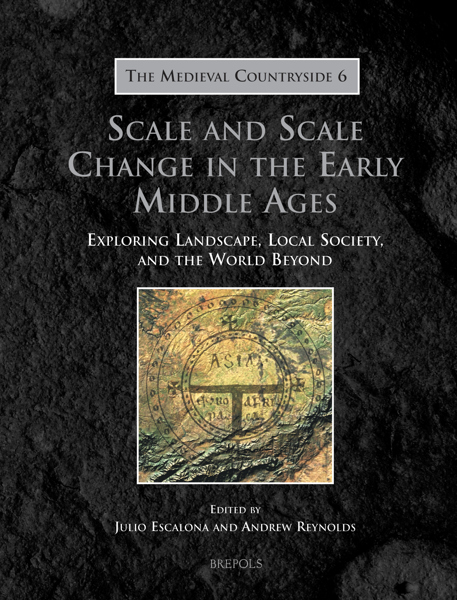
Britons, Saxons, and Scandinavians
The Historical Geography of Glanville R. J. Jones
Paul S. Barnwell, Brian Roberts (eds)
- Pages: 477 p.
- Size:156 x 234 mm
- Illustrations:42 b/w
- Language(s):English
- Publication Year:2012
- € 140,00 EXCL. VAT RETAIL PRICE
- ISBN: 978-2-503-53207-3
- Hardback
- Available
- € 140,00 EXCL. VAT RETAIL PRICE
- ISBN: 978-2-503-53978-2
- E-book
- Available
A selection of the collected papers of the late Professor Glanville Jones which explore ‘early’ medieval estate structures and the evolution of rural settlements in England.
"Plainly stated, this volume offers a practical compendium of some of GRJJ's most significant scholarly papers that is both timely and valuable. These papers, wich mostly treat Wales, are lucid, elegant, interesting, and, yes, at times controversial in their conclusions - all of which makes them worthy of serious reflection." (Betsy L. Chunko, in: The Medieval Review, 13.06.06)
"The editors are well disposed to the concept of 'multiple estates' and their selection of the ten papers 'has been carefully made to show the evolution of his thought on this matter and to demonstrate its integrity and coherence (...). Those of us who remember Glanville's friendliness and enthusiasm and his ready willingness to discuss his concept will feel that they have got the onte of this book exactly right." (David Hey, in: Northern History, Vol. L:2, September 2013, p. 319-320)
This volume contains a selection of the collected papers of the late Professor Glanville R. J. Jones. Following a brief assessment of the man and his work, by J. Beverley Smith, an extensive introductory essay by the editors sets Jones’s work in a wide historiographical context. This material provides an overview of his ‘multiple estate’ model and concludes with an assessment of its continuing relevance in the twenty-first century.
The selection of his published papers then begins with Welsh roots and the work from which his ideas grew, while the remaining items show how the questions he asked led him towards explorations of ‘early’ medieval estate structures in England, their links with rural settlement evolution, and the pragmatic, tenurial, and fiscal arrangements which bound individual rural settlements into broader spatial structures. Jones’s ideas are often cited — usually, but not invariably, with praise — and this corpus is intended to allow today’s scholars to reach a mature assessment of what he achieved. Right or wrong, he presented important challenges to the various disciplines working on the archaeology, history, and historical geography of the periods before and after the Norman Conquest of 1066.
List of Illustrations
Preface
Acknowledgements
Editorial Note
List of Abbreviations
Part I: G. R. J. Jones and his Work
Publications of G. R. J. Jones
1. Glanville Jones: An Appreciation - J. B. SMITH
2. The Multiple Estate of Glanville Jones: Epitome, Critique, and Context - BRIAN K. ROBERTS WITH P. S. BARNWELL
List of Works Cited in Part I
Part II: Selected Papers by G. R. J. Jones
3. The Multiple Estate as a Model Framework for Tracing the Evolution of Rural Settlement
4. Rural Settlement in Anglesey
5. The Distribution of Bond Settlements in North-West Wales
6. Nucleal Settlement and its Tenurial Relationships: Some Morphological Implications
7. Field Systems of North Wales
8. Early Territorial Organization in Northern England and its Bearing on the Scandinavian Settlement
9. Early Territorial Organization in Gwynedd and Elmet
10. Multiple Estates and Early Settlement
11. The Portrayal of Land Settlement in Domesday Book
12. The Models for Organization in Llyfr Iorwerth and Llyfr Cyfnerth
List of Works Cited in Part II
Index




